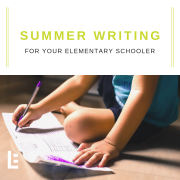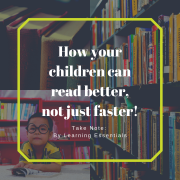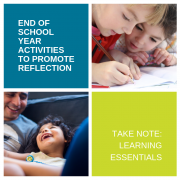Rainy Day Fine Motor Work
When a summer day is not so summery, parents are often left with minimal options for entertaining younger children until the rain lets up. While technology is the obvious default go-to, it’s still a good idea to have some tricks up your sleeve. Anytime that you can disguise learning as an engaging indoor game or activity, children thrive with that challenge.
Activities to build fine motor skills:
- Two simple items from a craft store can help to boost your child’s fine motor skills. Packs of multicolored beads and thread, yarn, or jewelry strands are all you need to encourage dexterity and creativity. This is also an opportunity to take a hands-on approach to patterns. You can extend the activity by beading alongside your child and asking him or her to identify which color comes next in your pattern. You can also use this activity as a conversation starter about your own favorite colors, birthstones, your alma mater colors, the order of the colors in the rainbow, etc.
- Challenge your children to an ice cube tray race in which you sort small items into the different cubes using tweezers. You can use spare coins/change, beads, different types of dried beans, multicolored confetti, M&Ms, old buttons, etc. Using tweezers adds to the challenge and helps to build the smaller muscles in the hand and fingers that are used for writing.
- Chinese checkers is another great game that helps to build fine motor skills. In fact, anything that requires children to pick up and place marbles in a specific area builds those motor skills.
- Stickers and sticker books that ask children to arrange the stickers into specific scenes on the page are great for dexterity as well. This not only strengthens the tiny muscles in their fingers, but it also promotes logical and ordered thinking. For instance, a scene in the sticker book might require them to put the police officer in the correct car, match the hair stylist with the proper tools, put domesticated animals in the house while the others go in the barn, place the flowers in the empty flower pot, etc.
- Keep busy hands moving by making a paperclip chain. You can also use different colored or different patterned paper clips to create a chain with an alternating pattern.
- Use clay or playdough to roll, knead, twist, and cut shapes or “ingredients” to make playdough pizza. Just remember, no eating!
- Create your own kiddie putting green using large styrofoam sheets, golf tees, and plastic golf balls. The tees stick straight down into the foam sheets, which allow kids to practice placing and balancing the plastic golf balls gently. As children practice swinging and hitting the plastic golf balls, they are getting practice with hand-eye coordination as well.
- Use eye droppers and food coloring to turn cups of water into color-changing liquid art. The eye dropper builds fine motor skills, but the activity also teaches children about primary and secondary colors. You can also extend the activity by asking your child to predict what color would result from dropping a blue dot of food coloring into red water, yellow water, etc.
Games such as Jenga, Lincoln Logs, Legos, and Operation help children with motor skills while keeping the fun and competition in the forefront. Jenga requires children to practice precision, balance, strategy, and patience, all while keeping a steady hand. As always, you can also use games to teach accountability and good sportsmanship by requiring the “loser” to clean up the fallen blocks—but remind them that it’s all in fun!








